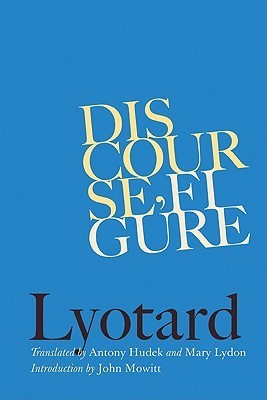What do you think?
Rate this book


512 pages, Hardcover
First published January 1, 1985
The figure-image, that which I see in the hallucination or the dream, and which the painting and film offer me, is an object placed at a distance, a theme. It belongs to the order of the visible, as outline [tracé révélateur]. The figure-form is present in the visible, and may even be visible, but in general remains unseen. This is Lhote's regulating line [tracé régulateur], the Gestalt of a configuration, the architecture of a picture, the scenography of a performance, the framing of a photograph—in short, the schema. By definition, the figure-matrix is invisible, the object of originary repression, instantly laced with discourse: "originary" phantasy.